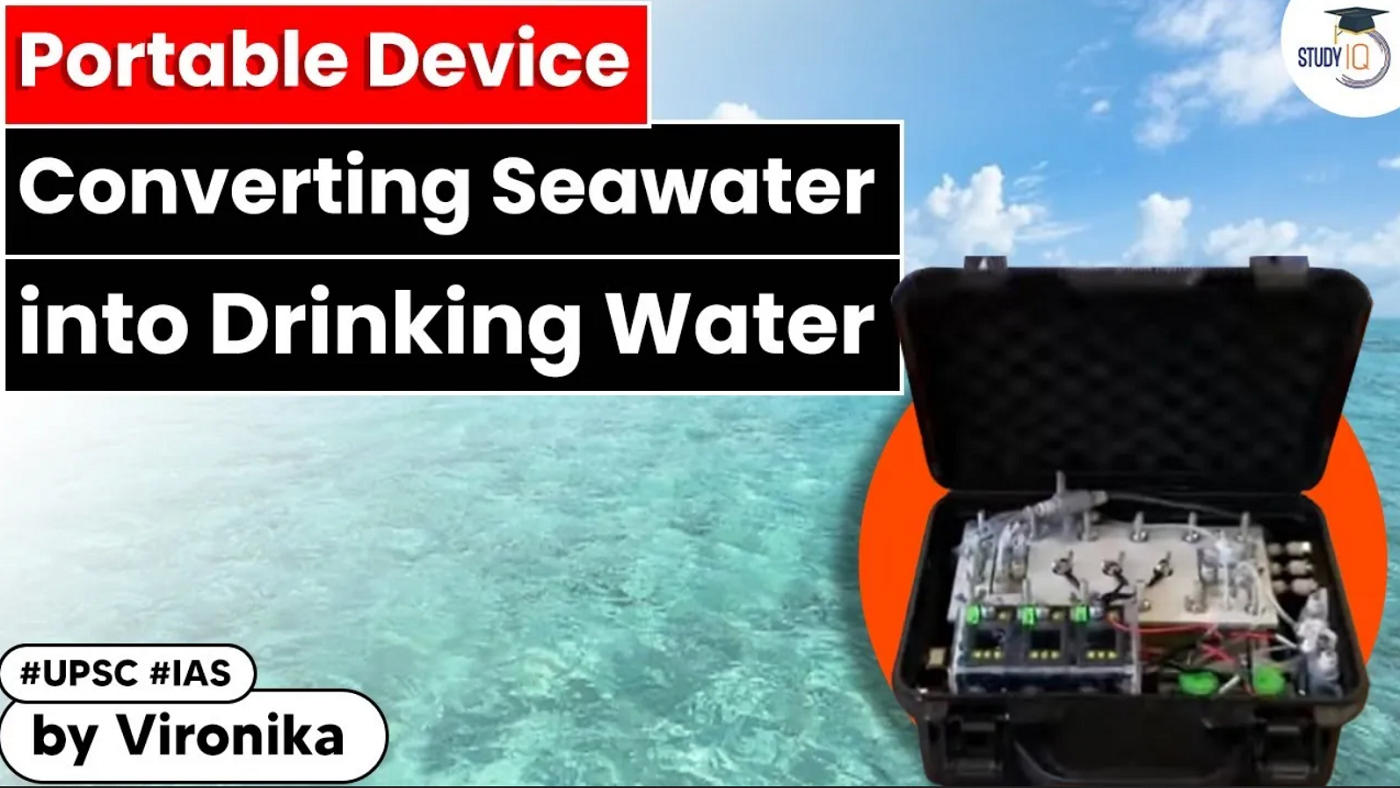Table of Contents
- How will a portable device turn sea water into drinking water without using filters?
- Massachusetts Institute of Technology (MIT) researchers have developed a portable desalination unit, weighing less than 10 kg, that can remove particles and salts to generate drinking water.

- The device, which is about the size of a suitcase, needs less power to operate than a cell phone charger. It can also be driven by a small, portable solar panel, which can be purchased online for around $50.
- It automatically generates drinking water that exceeds World Health Organization (WHO) quality standards. The technology is packaged into a user-friendly device that runs with the push of a single button.
- While other portable desalination units that require water to pass through filters, this device utilises electrical power to remove particles from drinking water.
- Eliminating the need for replacement filters greatly reduces the long-term maintenance requirements.
- This could enable the unit to be deployed in remote and severely resource-limited areas, such as communities on small islands or aboard seafaring cargo ships. It could also be used to aid refugees fleeing natural disasters or by soldiers carrying out long-term military operations.
- The researchers have described the device in the American Chemical Society journal Environmental Science & Technology.
How it works?
- The unit relies on a technique called ion concentration polarisation, which was pioneered by Han’s group more than 10 years ago.
- Rather than filtering water, the process applies an electrical field that causes positively or negatively charged particles — including salt molecules, bacteria, viruses — to be repelled as they flow past.

- The charged particles are funnelled into a second stream of water that is eventually discharged. The process removes solids, allowing clean water to pass through the channel.
- Commercially available portable desalination units typically require high-pressure pumps to push water through filters, which are very difficult to miniaturize without compromising the energy-efficiency of the device.
Significance of this device
- Since it runs on electricity, the long-term maintenance requirements are going to be considerably reduced by eliminating the need for replacement filters in the device. Hence, this portable desalination unit could also be used in remote areas and places having limited water resources.
- According to MIT researchers, it can also be powered by a small, portable solar panel that can be purchased online for around $50 (around Rs 3,800 at current currency rates).
Beach tests
- After running lab experiments using water with different salinity and turbidity (cloudiness) levels, scientists field-tested the device at Boston’s Carson Beach.
- They set the box near the shore and tossed the feed tube into the water. In about half an hour, the device had filled a plastic drinking cup with clear, drinkable water.
- It was successful even in its first run, which was quite exciting and surprising.
- The resulting water exceeded World Health Organization quality guidelines, and the unit reduced the amount of suspended solids by at least a factor of 10. Their prototype generates drinking water at a rate of 0.3 liters per hour, and requires only 20 watts of power per liter.
Need of such device
- Water covers about 71% of the earth’s surface.
- 97% of the earth’s water is found in the oceans (too salty for drinking, growing crops, and most industrial uses except cooling).
- 3% of the earth’s water is fresh.
- 5% of the earth’s fresh water is unavailable: locked up in glaciers, polar ice caps, atmosphere, and soil; highly polluted; or lies too far under the earth’s surface to be extracted at an affordable cost.
- 5% of the earth’s water is available fresh water.
Drinking water crisis in India
- The crisis of adequate safe drinking water has gained currency in recent years and this lack of access to clean and regular drinking water is disproportionately felt by the socially, economically, geographically or demographically disadvantaged ones.
- India supports over 16% of the world’s population with only 4% of the world’s freshwater. To make matters worse, more than half of the major rivers in India are highly polluted and unfit for consumption.



Question:
Which of the following techniques is used for reducing the total dissolved solids (TDS) in the water?
(a) Osmosis
(b) Ion exchange
(c) Distillation
(d) Both b and c
Latest Burning Issues | Free PDF
























 WhatsApp
WhatsApp